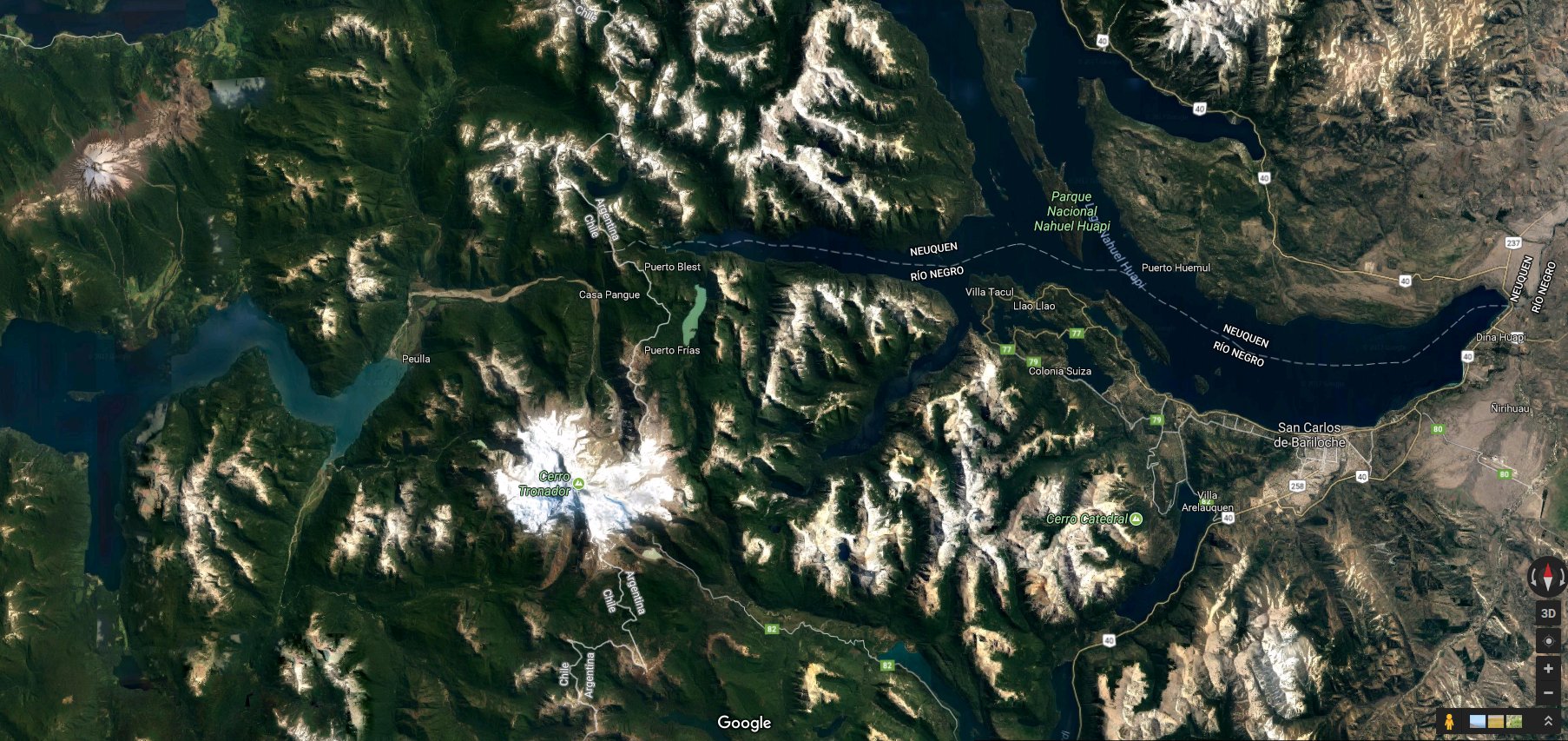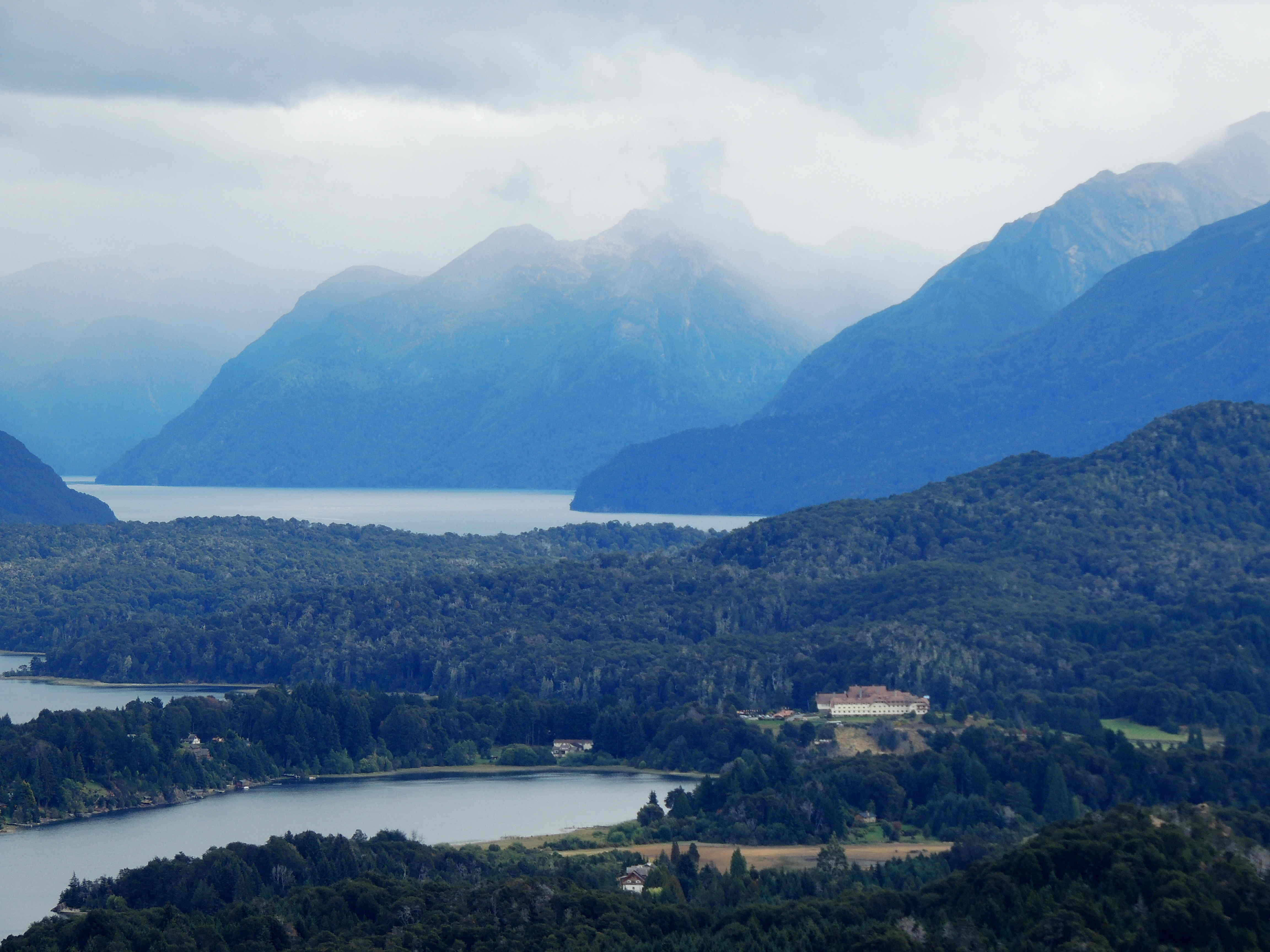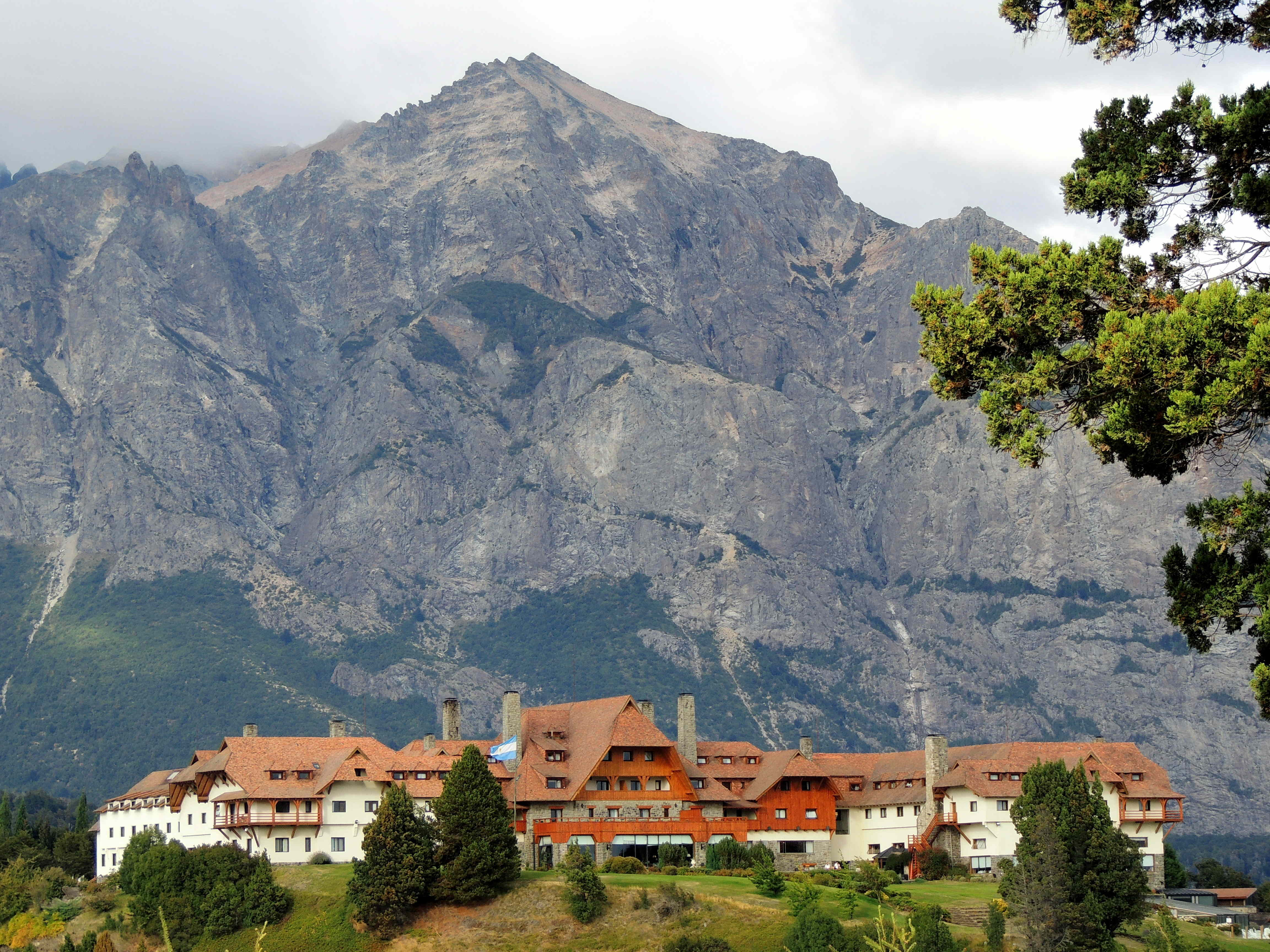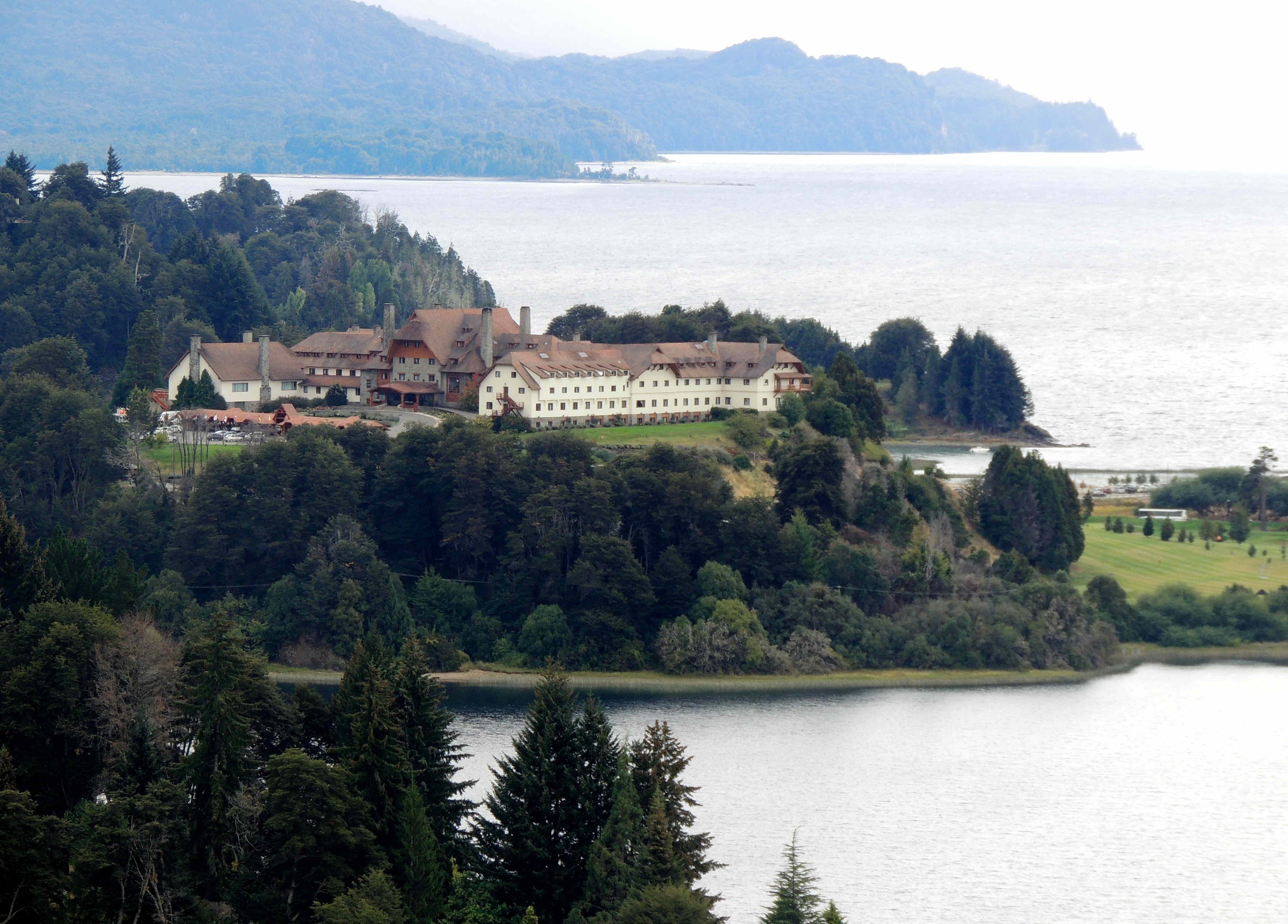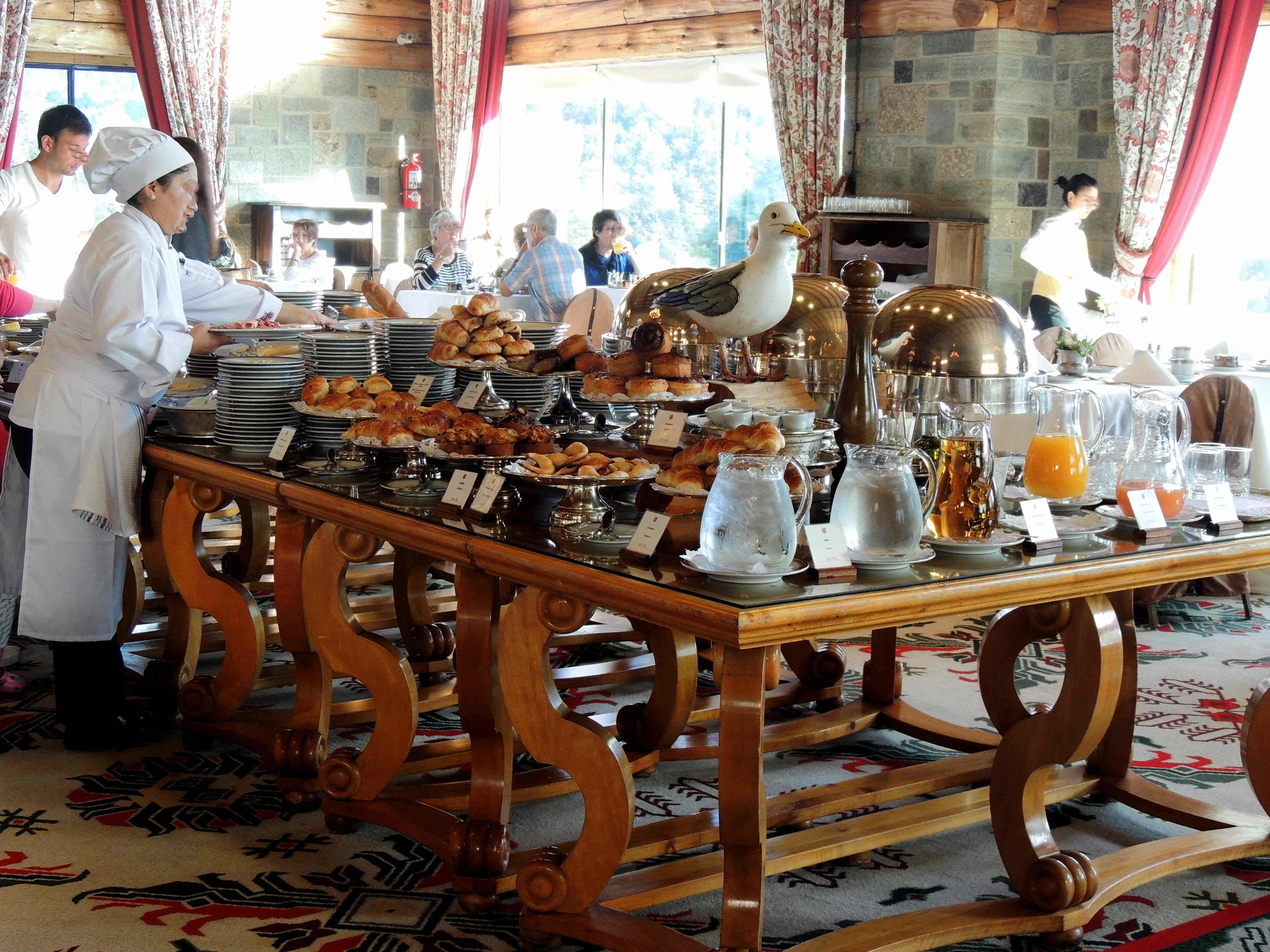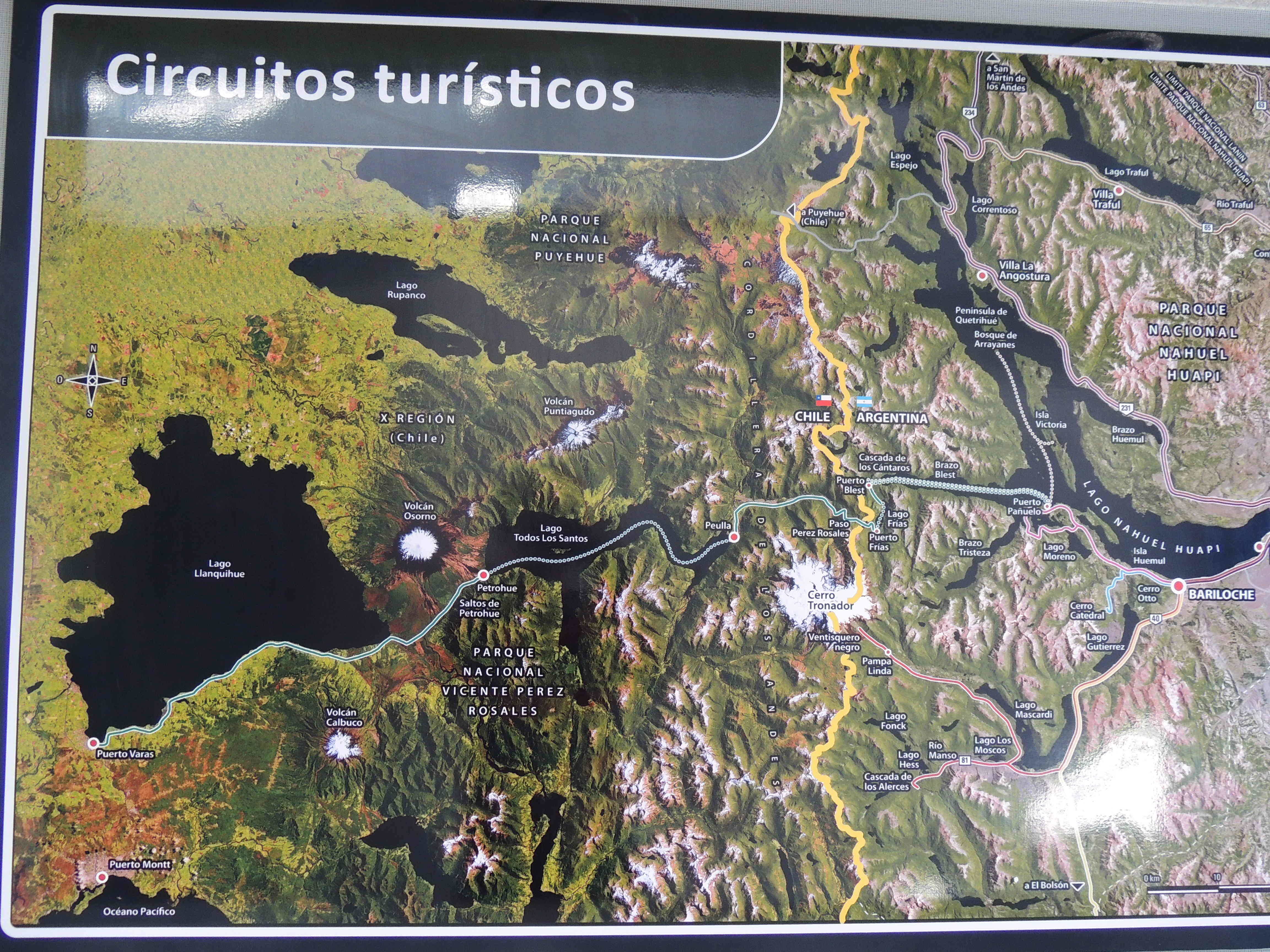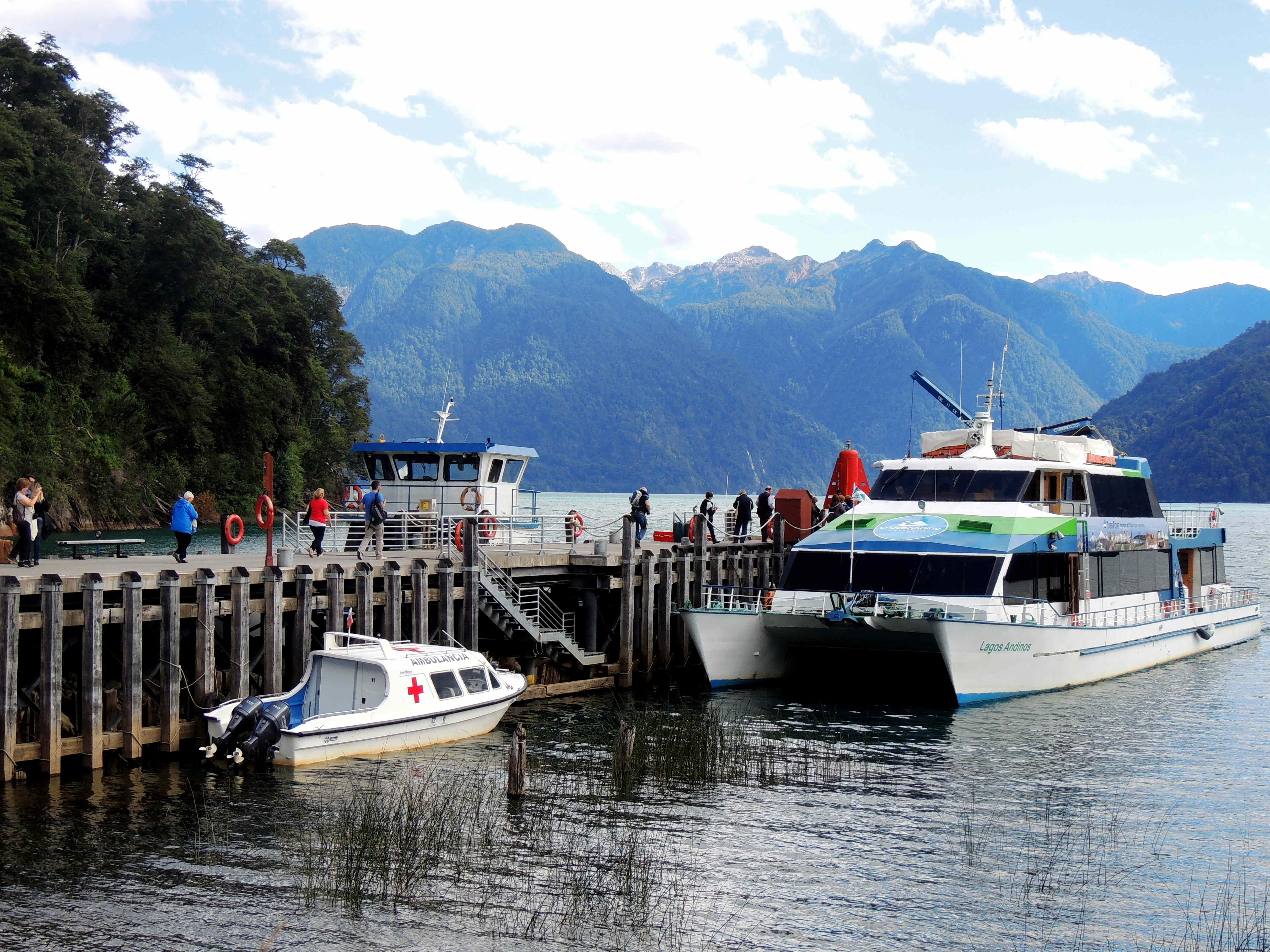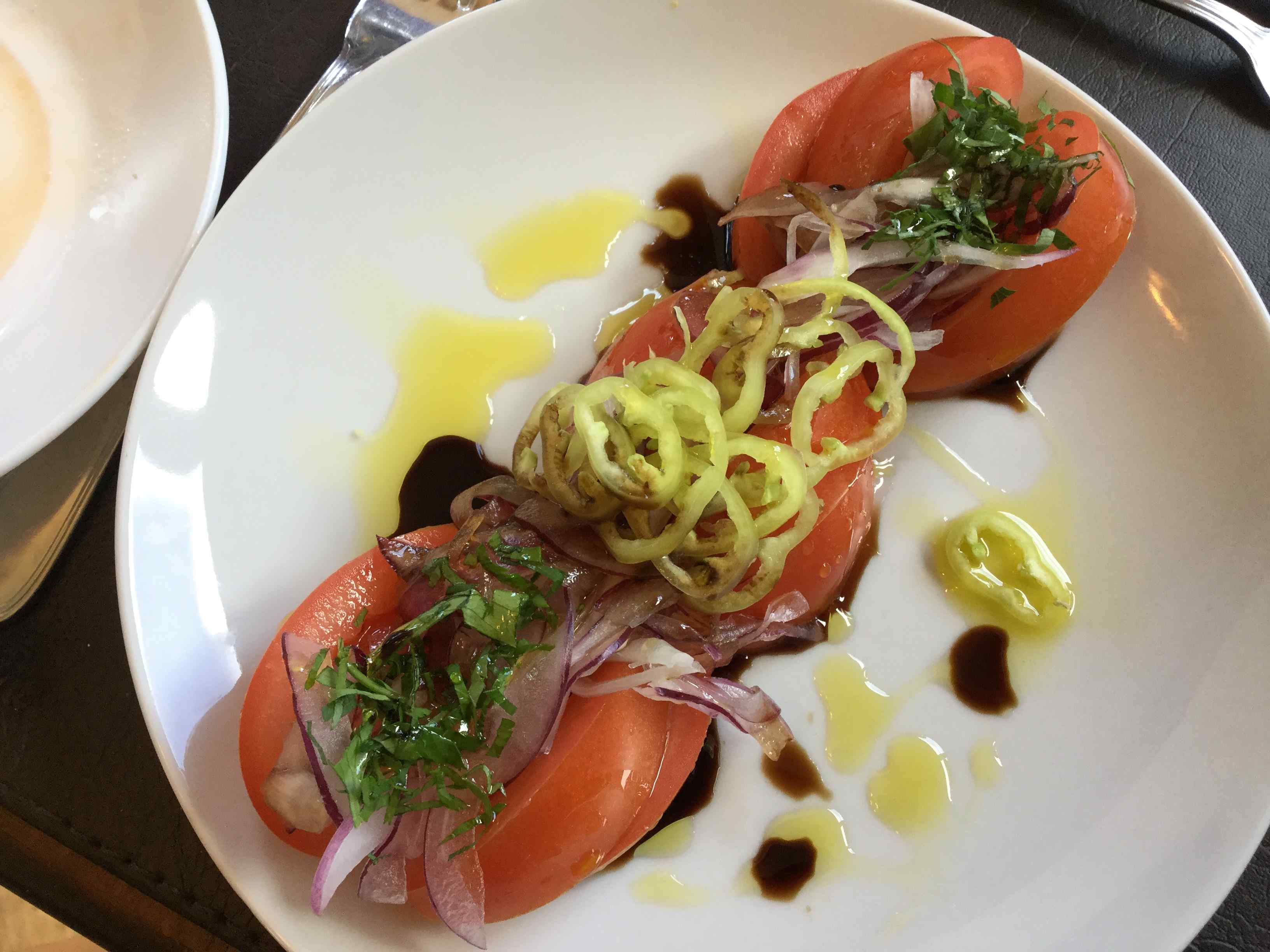This post follows on from: Glacier Country
The Google satellite map below (click to enlarge) shows the eastern section of the extensive lakes system in northern Patagonia. The region is at a similar latitude to Hobart and is surprisingly lush and green, with landscapes reminiscent of the European Alps. We flew into Bariloche (San Carlos de Bariloche) and spent two nights there before heading westwards by water and road to reach Chile.
From various lookouts you get to appreciate the beauty of the landscape and the massiveness of the region.
The region has a long and mixed history of European settlement dating back to Spanish exploration in the late 1500s. There is a clear Germanic influence in Bariloche.
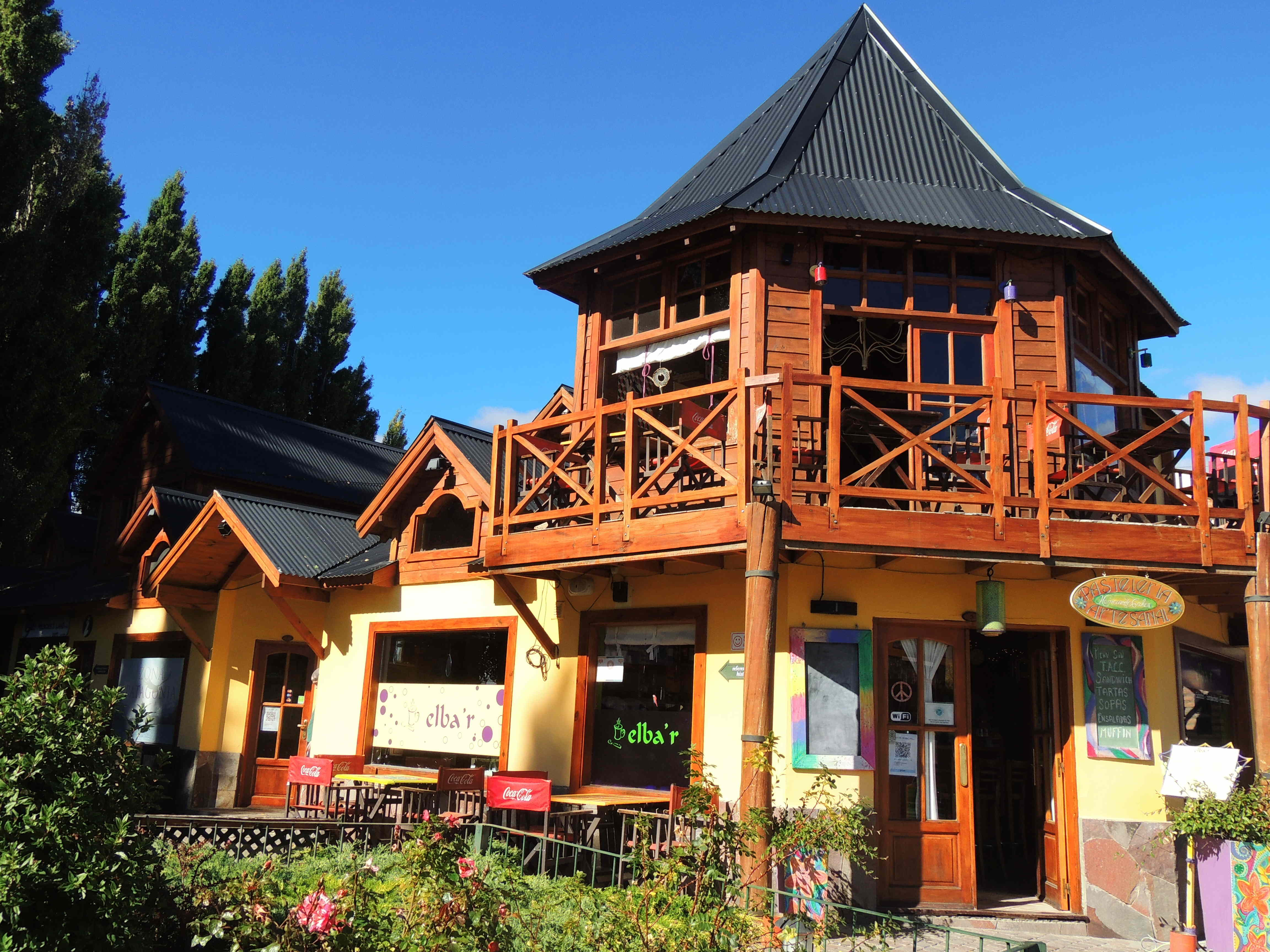 The most famous hotel and a major man-made landmark is the Llao Llao Hotel about 20 km outside Bariloche township. The original wooden structure was destroyed by fire in 1939, not long after it was completed. It was rebuilt soon after, but fell into disrepair in the 1970s but was brought back to life in the 1990s to become one of the most famous hotels in the world. Dignitaries of all nationalities and persuasions have stayed there.
The most famous hotel and a major man-made landmark is the Llao Llao Hotel about 20 km outside Bariloche township. The original wooden structure was destroyed by fire in 1939, not long after it was completed. It was rebuilt soon after, but fell into disrepair in the 1970s but was brought back to life in the 1990s to become one of the most famous hotels in the world. Dignitaries of all nationalities and persuasions have stayed there.
The rambling corridors and surrounding golf course and parks were an attraction in their own right.
We missed visiting their upmarket restaurant as it was closed. But the breakfasts were truly sumptuous.
Boarding a boat early morning we sailed westwards into the Andes proper, aiming for Petrohue in Chile where we would spend two nights.
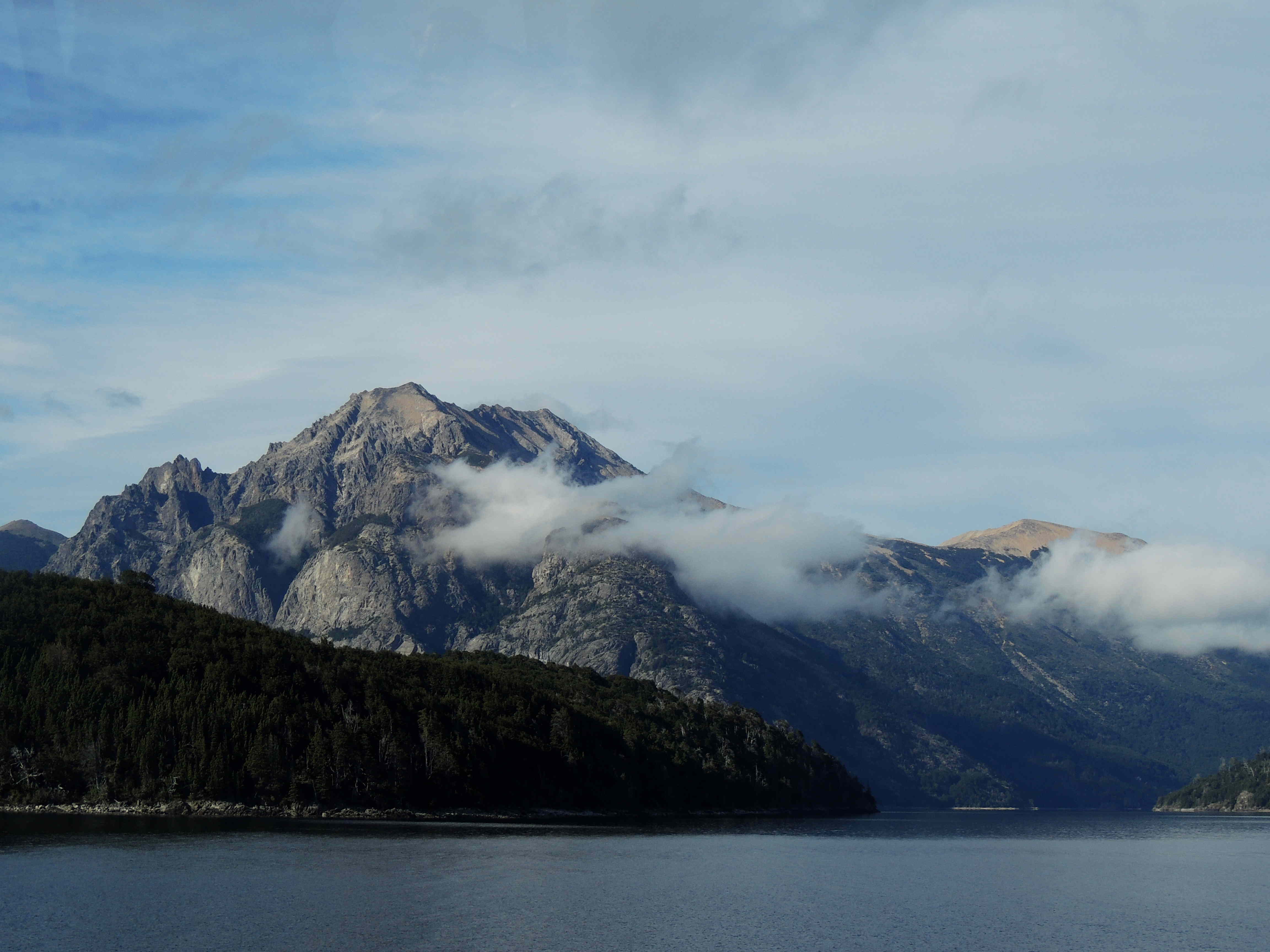
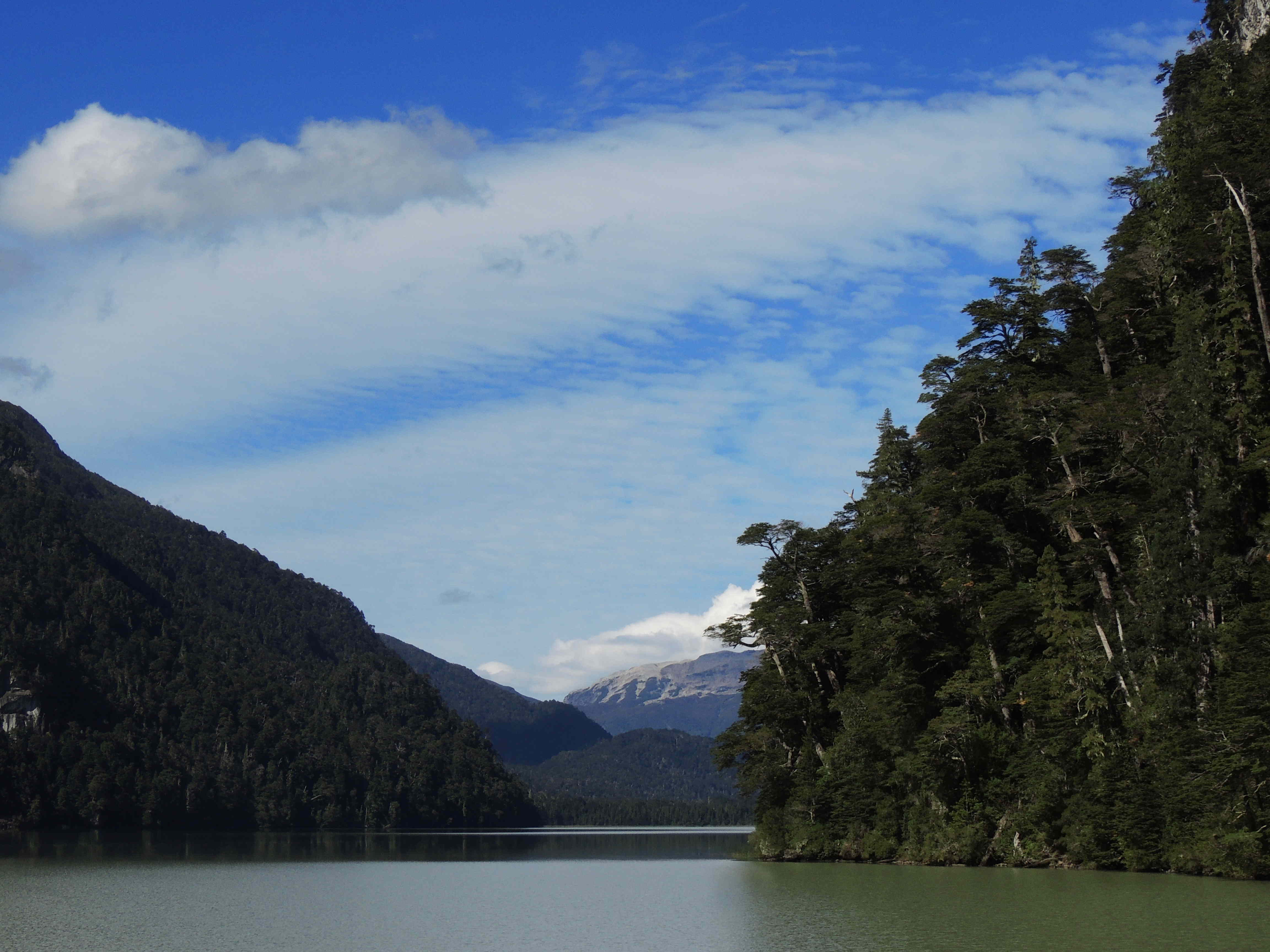
 Travelling overland between lakes we arrived at Puella in Chile, on the edge of the next major lake in the system.
Travelling overland between lakes we arrived at Puella in Chile, on the edge of the next major lake in the system.
From there we headed to Petrohue, with volcanoes appearing on the horizon as we sailed. Waiting for us at the end of the day was a delectable traditional Chilean salad.
Click here for the next stage in our South American journey: Patagonia – Chilean Lakes!


